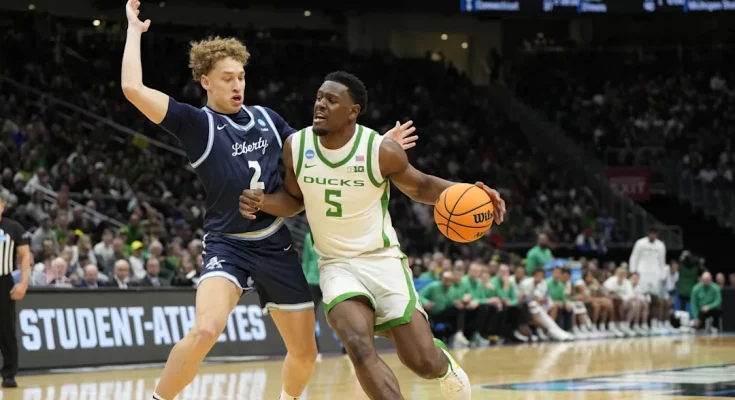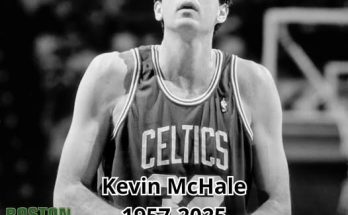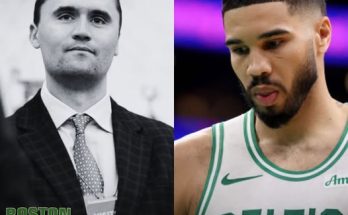The Indiana Pacers’ meteoric rise this postseason had its defining moment when Tyrese Haliburton delivered the knockout blow to the Milwaukee Bucks. In a closeout game packed with nerves, adjustments, and high-octane basketball, the 24-year-old All-Star guard rose to the occasion, shaking off defenders and sealing the series with the kind of poise and flair that turns a rising star into a franchise legend. When Haliburton got around his defender with the clock winding down, the crowd on their feet, and a trip to the next round hanging in the balance, the moment crystallized everything the Pacers had been working toward. That single move—a calculated crossover, a hesitation dribble, and the elegant glide to the rim—symbolized the emergence of a new era in Indiana basketball.
Few expected the Pacers to unseat the Bucks, especially not with Milwaukee boasting a veteran core led by Giannis Antetokounmpo, a defensive anchor in Brook Lopez, and an experienced closer in Khris Middleton. But the Pacers didn’t just defeat the Bucks—they outpaced them. Indiana’s style of play under head coach Rick Carlisle emphasized ball movement, quick decision-making, and exploiting every mismatch available. Haliburton operated as the engine of that offense, initiating sets with confidence and keeping defenders off balance with his unique combination of vision and unpredictability. That’s what made his final sequence so emblematic: he didn’t panic, didn’t rush, and didn’t play into the Bucks’ expectations. He read the floor, saw the crack, and attacked it with purpose.
Over the course of the series, Haliburton not only proved that he could hang with the league’s elite but also demonstrated an uncanny ability to dictate pace and tempo in a playoff setting. He wasn’t simply reacting to the defense—he was controlling it. Every switch, every rotation, every gamble made by the Bucks seemed to fall right into the trap Haliburton had set. His ability to get to his spots, whether for a mid-range pull-up, a floater, or a kick-out pass, forced the Bucks to chase him constantly. By the time Game 6 arrived, Milwaukee’s defenders looked a step slower, mentally and physically. That weariness was on full display in the closing minutes, especially on the final possession where Haliburton’s surgical approach left his man leaning the wrong way, creating just enough daylight to ice the game.
It wasn’t just Haliburton’s scoring that propelled Indiana—it was his leadership. From the moment the series began, Haliburton was vocal, assertive, and visibly locked in. He directed traffic like a seasoned quarterback, calling out defensive switches and encouraging his teammates. The synergy he had with Myles Turner and Obi Toppin in the pick-and-roll proved particularly lethal, while his chemistry with shooters like Buddy Hield and Bennedict Mathurin created spacing nightmares for Milwaukee. When Haliburton was on the court, the Pacers played with a different rhythm—one that kept defenses scrambling and teammates engaged. His confidence was contagious, and it gave Indiana the belief they could go toe-to-toe with anyone.
The Bucks, meanwhile, looked like a team struggling to recalibrate without their usual rhythm. Giannis missed one game due to a lingering calf strain, and even when he was on the floor, he wasn’t at full throttle. Milwaukee tried to compensate by leaning more heavily on Damian Lillard, who delivered bursts of brilliance but couldn’t consistently overcome Indiana’s defensive schemes. The Pacers threw multiple looks at Lillard—sometimes pressing him full court, sometimes trapping him off screens—and every possession felt like a grind. That grind wore on the Bucks, and it was evident in their body language by Game 5. Haliburton, by contrast, looked fresh, loose, and fueled by the moment. That energy rippled through his team.
There were moments throughout the series when the Bucks threatened to reclaim momentum. In Game 3, down double digits, Milwaukee clawed back in the third quarter behind a vintage Giannis run, only for Haliburton to calmly respond with three straight assists and a timely steal. In Game 4, with the Bucks up by eight late in the fourth, Haliburton went on a personal 7-0 run to flip the game on its head. Every time Milwaukee landed a punch, Haliburton answered with one of his own—and more often than not, his blow hit harder. That ability to rise in clutch moments, especially for a player with relatively limited playoff experience, spoke volumes.
Indiana’s supporting cast also deserves credit, but Haliburton was the gravitational force. T.J. McConnell provided steady minutes off the bench, Turner protected the rim with a vengeance, and Hield hit several timely threes. But none of that happens without Haliburton orchestrating the entire operation. He was the calm in the storm and the spark when things needed to ignite. He averaged over 20 points and 10 assists per game in the series, but numbers alone don’t capture his impact. It was his decision-making, his court awareness, and his fearlessness that tilted the series in Indiana’s favor. For a young guard, his command of pace and spacing resembled that of seasoned veterans like Chris Paul or Steve Nash. But there’s something uniquely modern about Haliburton’s approach—a blend of high-IQ basketball and unorthodox mechanics that leave defenders second-guessing.
When the final buzzer sounded and the crowd erupted, Haliburton didn’t scream or celebrate wildly. He looked relieved. Relieved that all the work, all the practices, all the hours studying film had paid off. Relieved that he had delivered on his promise to lead this franchise back into relevance. And maybe, just maybe, a little proud that he’d proven the doubters wrong. The questions about whether he could be “the guy” in a playoff setting were answered with resounding clarity. Not only can he be that guy—he already is.
This series win carries significance beyond just advancing to the next round. It symbolizes a changing of the guard in the Eastern Conference. For years, Milwaukee, Boston, and Miami have held court, with Indiana playing the role of spoiler or rebuild project. But now, with Haliburton at the helm, the Pacers have a bonafide superstar to build around. This wasn’t a fluke or an upset—it was a calculated, systematic dismantling of a veteran team by a younger, hungrier, better-prepared squad. That starts at the top, and the top in Indiana is Haliburton.
His final play—the crossover, the drive, the finish—will replay in Pacers fans’ memories for years. But more than the move itself, it’s what it represented: the arrival of a new face of the franchise, the validation of a trade that once raised eyebrows, and the hope that Indiana’s basketball future might be brighter than anyone anticipated. In that single moment, Haliburton didn’t just win a game—he claimed a legacy. The kind of legacy that makes you believe the Pacers are no longer underdogs but contenders. And for Tyrese Haliburton, that’s just the beginning.



